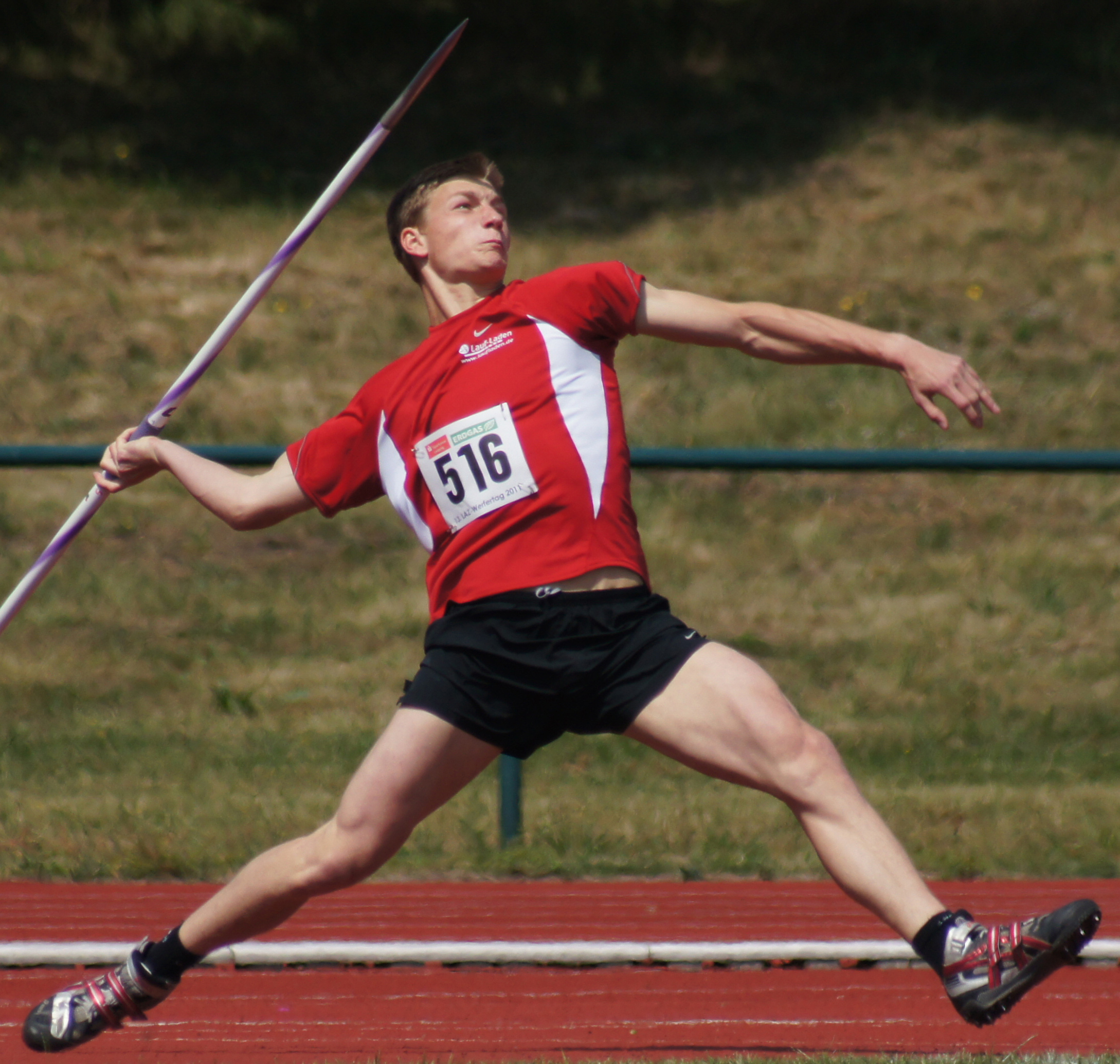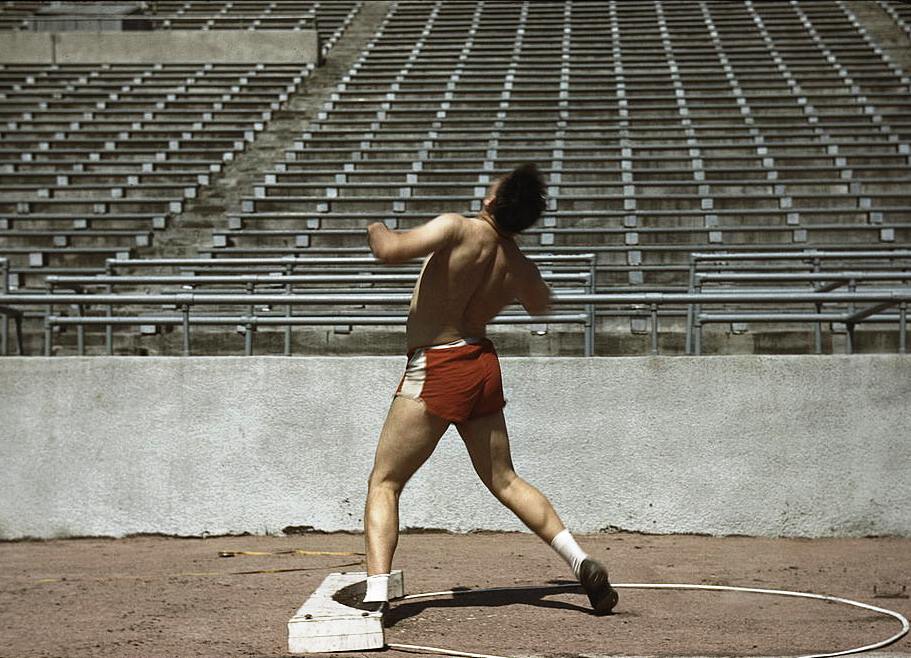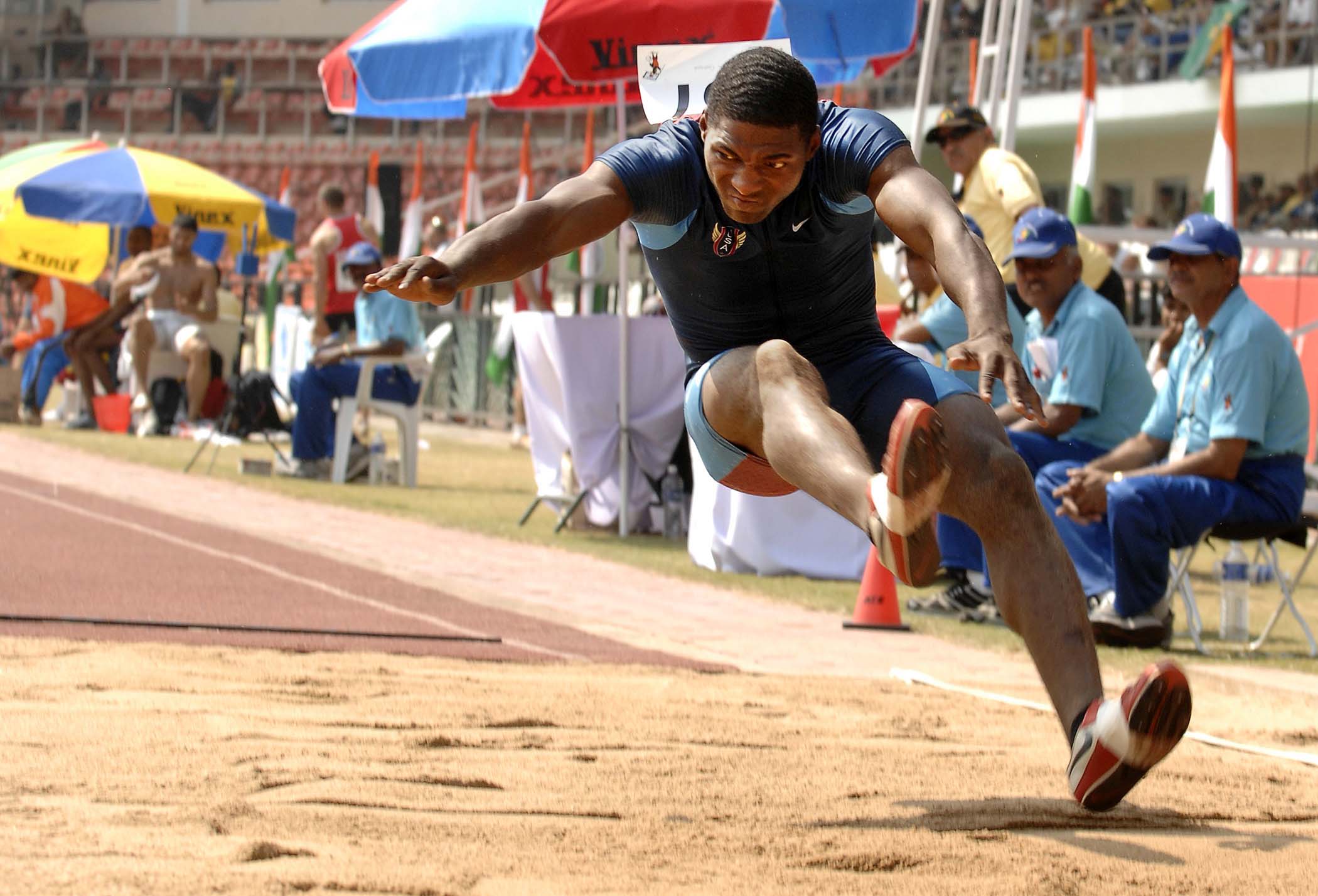|
Elmo Savola
Elmo Savola (born 10 March 1995) is a Finland, Finnish athlete competing in the combined events. He won a bronze medal in the decathlon at the 2017 European Athletics U23 Championships, 2017 European U23 Championships. International competitions Personal bests Outdoor *100 metres – 10.83 (+1.3 m/s, Götzis 2016) *400 metres – 48.84 (Kuortane 2017) *1500 metres – 4:39.50 (Bydgoszcz 2017) *110 metres hurdles – 14.21 (+1.7 m/s, Bydgoszcz 2017) *High jump – 1.99 (Pori 2015) *Pole vault – 4.80 (Berlin 2018) *Long jump – 7.29 (-0.6 m/s, Bydgoszcz 2017) *Shot put – 14.01 (Jyväskylä 2018) *Discus throw – 43.65 (Götzis 2016) *Javelin throw – 63.28 (Oulu 2016) *Decathlon – 7956 (Bydgoszcz 2017) Indoor *60 metres – 7.07 (Kuortane 2018) *1000 metres – 2:50.93 (Jyväskylä 2018) *60 metres hurdles – 8.13 (Tampere 2016) *High jump – 2.02 (Kuortane 2016) *Pole vault – 4.67 (Tallinn 2017) *Long jump – 7.07 (Jyväskylä 2018) *Shot put – 14.08 ... [...More Info...] [...Related Items...] OR: [Wikipedia] [Google] [Baidu] |
Lappajärvi
Lappajärvi is a municipality in Finland in Southern Ostrobothnia region. It is from Lappajärvi to Seinäjoki, to Kokkola and to Vaasa. The municipality has a population of () and covers an area of of which is water. The population density is . The municipality is unilingually Finnish. Lake Lappajärvi, which gives the name to the municipality, is a meteor crater, one of the few meteor crater lakes found in Finland. Singer and performer, Timo Kotipelto from the worldwide known Finnish power metal band Stratovarius was born and raised in Lappajärvi. Notable people born in Lappajärvi *Johannes Bäck (1872 – 1952) *Aleksi Hakala (1886 – 1959) * Veikko Savela (1919 – 2015) * Jarmo Övermark (1955 – ) *Arto Melleri (1956 – 2005) * Seppo Särkiniemi (1957 – ) *Jussi Lampi (1961 – ) *Timo Kotipelto Timo Antero Kotipelto (born 15 March 1969) is a Finnish musician best known as the lead singer of the power metal band Stratovarius, whom he joined in 1994, as ... [...More Info...] [...Related Items...] OR: [Wikipedia] [Google] [Baidu] |
2018 European Athletics Championships
The 2018 European Athletics Championships were held in Berlin, Germany, from 6 to 12 August 2018. The championships were part of the first European Championships with other events happening in the United Kingdom. For the second Championships in a row the Russian team did not participate; this was due to the suspension of the All-Russia Athletic Federation by the International Association of Athletics Federations. However, several athletes were cleared by the IAAF to compete as Authorised Neutral Athletes under the flag of the European Athletic Association. Mariya Lasitskene became the first such athlete to win a gold medal, in the women's high jump. Event schedule Results Men Track * Indicates the athlete only competed in the preliminary heats and received medals. Field Women Track * Indicates the athlete only competed in the preliminary heats and received medals. Field Medal table ;Notes The European Athletic Association (commonly known as "European Athletic ... [...More Info...] [...Related Items...] OR: [Wikipedia] [Google] [Baidu] |
60 Metres
60 metres, or 60-meter dash, is a sprint event in track and field. It is a championship event for indoor championships, normally dominated by the best outdoor 100 metres runners. At outdoor venues it is a rare distance, at least for senior athletes. The format of the event is similar to other sprint distances. The sprinters follow three initial instructions: 'ready', instructing them to take up position in the starting blocks; 'set', instructing them to adopt a more efficient starting posture, which also isometrically preloads their muscles. This will enable them to start faster. The final instruction is the firing of the starter's pistol. Upon hearing this the sprinters stride forwards from the blocks. The 60 metres was an Olympic event in the 1900 As of March 1 ( O.S. February 17), when the Julian calendar acknowledged a leap day and the Gregorian calendar did not, the Julian calendar fell one day further behind, bringing the difference to 13 days until February 28 ( ... [...More Info...] [...Related Items...] OR: [Wikipedia] [Google] [Baidu] |
Javelin Throw
The javelin throw is a track and field event where the javelin, a spear about in length, is thrown. The javelin thrower gains momentum by running within a predetermined area. Javelin throwing is an event of both the men's decathlon and the women's heptathlon. History The javelin throw was added to the Ancient Olympic Games as part of the pentathlon in 708 BC. It included two events, one for distance and the other for accuracy in hitting a target. The javelin was thrown with the aid of a thong ('' ankyle'' in Greek) that was wound around the middle of the shaft. Athletes held the javelin by the ''ankyle'', and when they released the shaft, the unwinding of the thong gave the javelin a spiral trajectory. Throwing javelin-like poles into targets was revived in Germany and Sweden in the early 1870s. In Sweden, these poles developed into the modern javelin, and throwing them for distance became a common event there and in Finland in the 1880s. The rules continued t ... [...More Info...] [...Related Items...] OR: [Wikipedia] [Google] [Baidu] |
Discus Throw
The discus throw (), also known as disc throw, is a track and field event in which an athlete throws a heavy disc—called a discus—in an attempt to mark a farther distance than their competitors. It is an ancient sport, as demonstrated by the fifth-century-BC Myron statue '' Discobolus''. Although not part of the current pentathlon, it was one of the events of the ancient Greek pentathlon, which can be dated back to at least 708 BC, and it is part of the modern decathlon. History The sport of throwing the discus traces back to it being an event in the original Olympic Games of Ancient Greece. The discus as a sport was resurrected in Magdeburg, Germany, by gymnastics teacher Christian Georg Kohlrausch and his students in the 1870s. Organized men's competition was resumed in the late 19th century, and has been a part of the modern Summer Olympic Games since the first modern competition, the 1896 Summer Olympics. Images of discus throwers figured prominently in advertis ... [...More Info...] [...Related Items...] OR: [Wikipedia] [Google] [Baidu] |
Shot Put
The shot put is a track and field event involving "putting" (throwing) a heavy spherical ball—the ''shot''—as far as possible. The shot put competition for men has been a part of the modern Olympics since their revival in 1896, and women's competition began in 1948. History Homer mentions competitions of rock throwing by soldiers during the Siege of Troy but there is no record of any dead weights being thrown in Greek competitions. The first evidence for stone- or weight-throwing events were in the Scottish Highlands, and date back to approximately the first century. In the 16th century King Henry VIII was noted for his prowess in court competitions of weight and hammer throwing. The first events resembling the modern shot put likely occurred in the Middle Ages when soldiers held competitions in which they hurled cannonballs. Shot put competitions were first recorded in early 19th century Scotland, and were a part of the British Amateur Championships beginning in 18 ... [...More Info...] [...Related Items...] OR: [Wikipedia] [Google] [Baidu] |
Long Jump
The long jump is a track and field event in which athletes combine speed, strength and agility in an attempt to leap as far as possible from a takeoff point. Along with the triple jump, the two events that measure jumping for distance as a group are referred to as the "horizontal jumps". This event has a history in the ancient Olympic Games and has been a modern Olympic event for men since the first Olympics in 1896 and for women since 1948. Rules At the elite level, competitors run down a runway (usually coated with the same rubberized surface as running tracks, crumb rubber or vulcanized rubber, known generally as an all-weather track) and jump as far as they can from a wooden or synthetic board, 20 centimetres or 8 inches wide, that is built flush with the runway, into a pit filled with soft damp sand. If the competitor starts the leap with any part of the foot past the foul line, the jump is declared a foul and no distance is recorded. A layer of plasticine ... [...More Info...] [...Related Items...] OR: [Wikipedia] [Google] [Baidu] |
Pole Vault
Pole vaulting, also known as pole jumping, is a track and field event in which an athlete uses a long and flexible pole, usually made from fiberglass or carbon fiber, as an aid to jump over a bar. Pole jumping competitions were known to the Mycenaean Greeks, Minoan Greeks and Celts. It has been a full medal event at the Olympic Games since 1896 for men and since 2000 for women. It is typically classified as one of the four major jumping events in athletics, alongside the high jump, long jump and triple jump. It is unusual among track and field sports in that it requires a significant amount of specialised equipment in order to participate, even at a basic level. A number of elite pole vaulters have had backgrounds in gymnastics, including world record breakers Yelena Isinbayeva and Brian Sternberg, reflecting the similar physical attributes required for the sports. Running speed, however, may be the most dominant factor. Physical attributes such as speed, agility and stre ... [...More Info...] [...Related Items...] OR: [Wikipedia] [Google] [Baidu] |
High Jump
The high jump is a track and field event in which competitors must jump unaided over a horizontal bar placed at measured heights without dislodging it. In its modern, most-practiced format, a bar is placed between two standards with a crash mat for landing. Since ancient times, competitors have introduced increasingly effective techniques to arrive at the current form, and the current universally preferred method is the Fosbury Flop, in which athletes run towards the bar and leap head first with their back to the bar. The discipline is, alongside the pole vault, one of two vertical clearance events in the Olympic athletics program. It is contested at the World Championships in Athletics and the World Athletics Indoor Championships, and is a common occurrence at track and field meets. The high jump was among the first events deemed acceptable for women, having been held at the 1928 Olympic Games. Javier Sotomayor (Cuba) is the current men's record holder with a jump of set ... [...More Info...] [...Related Items...] OR: [Wikipedia] [Google] [Baidu] |
110 Metres Hurdles
The 110 metres hurdles, or 110-metre hurdles, is a hurdling track and field event for men. It is included in the athletics programme at the Summer Olympic Games. The female counterpart is the 100 metres hurdles. As part of a racing event, ten hurdles of in height are evenly spaced along a straight course of 110 metres. They are positioned so that they will fall over if bumped into by the runner. Fallen hurdles do not carry a fixed time penalty for the runners, but they have a significant pull-over weight which slows down the run. Like the 100 metres sprint, the 110 metres hurdles begins in the starting blocks. For the 110 m hurdles, the first hurdle is placed after a run-up of 13.72 metres (45 ft) from the starting line. The next nine hurdles are set at a distance of 9.14 metres (30 ft) from each other, and the home stretch from the last hurdle to the finish line is 14.02 metres (46 ft) long. The Olympic Games have included the 11 ... [...More Info...] [...Related Items...] OR: [Wikipedia] [Google] [Baidu] |
1500 Metres
The 1500 metres or 1,500-metre run (typically pronounced 'fifteen-hundred metres') is the foremost middle distance track event in athletics. The distance has been contested at the Summer Olympics since 1896 and the World Championships in Athletics since 1983. It is equivalent to 1.5 kilometers or approximately miles. The event is closely associated with its slightly longer cousin, the mile race, from which it derives its nickname "the metric mile". The demands of the race are similar to that of the 800 metres, but with a slightly higher emphasis on aerobic endurance and a slightly lower sprint speed requirement. The 1500 metre race is predominantly aerobic, but anaerobic conditioning is also required. Each lap run during the world-record race run by Hicham El Guerrouj of Morocco in 1998 in Rome, Italy averaged just under 55 seconds (or under 13.8 seconds per 100 metres). 1,500 metres is three and three-quarter laps around a 400-metre track. During the 197 ... [...More Info...] [...Related Items...] OR: [Wikipedia] [Google] [Baidu] |
400 Metres
The 400 metres, or 400-meter dash, is a sprint event in track and field competitions. It has been featured in the athletics programme at the Summer Olympics since 1896 for men and since 1964 for women. On a standard outdoor running track, it is one lap around the track. Runners start in staggered positions and race in separate lanes for the entire course. In many countries, athletes previously competed in the 440-yard dash (402.336 m)—which is a quarter of a mile and was referred to as the 'quarter-mile'—instead of the 400 m (437.445 yards), though this distance is now obsolete. Like other sprint disciplines, the 400 m involves the use of starting blocks. The runners take up position in the blocks on the 'ready' command, adopt a more efficient starting posture which isometrically preloads their muscles on the 'set' command, and stride forwards from the blocks upon hearing the starter's pistol. The blocks allow the runners to begin more powerfully and thereb ... [...More Info...] [...Related Items...] OR: [Wikipedia] [Google] [Baidu] |







